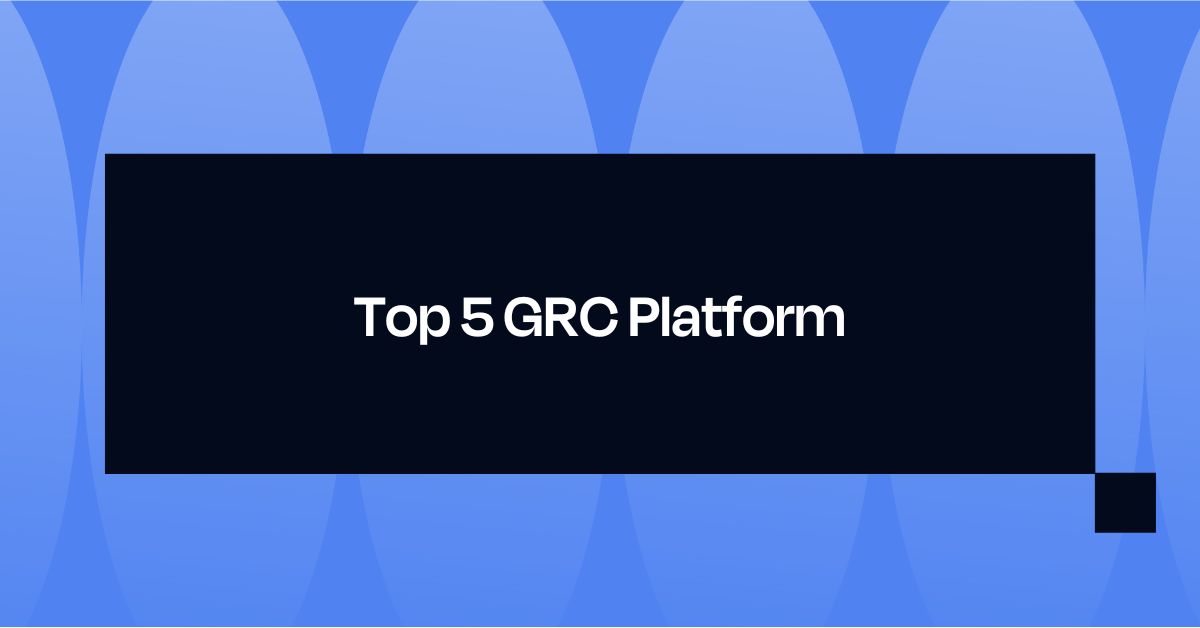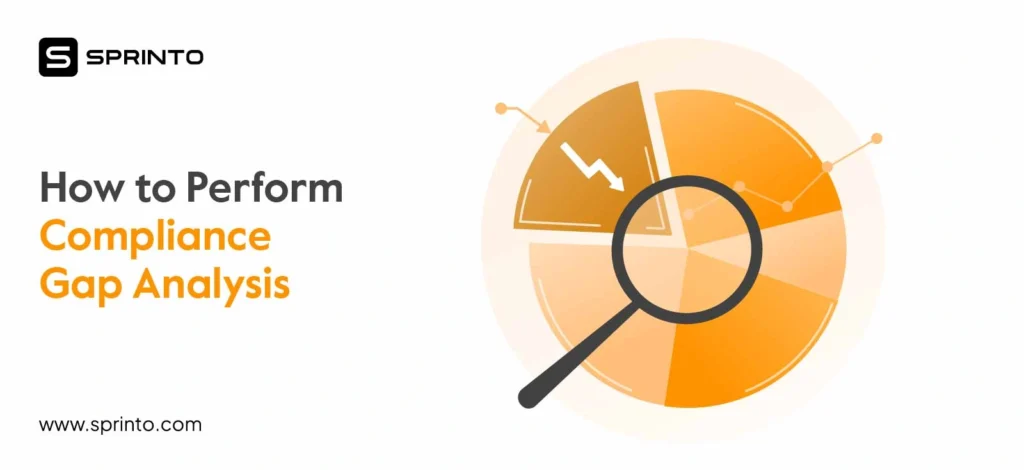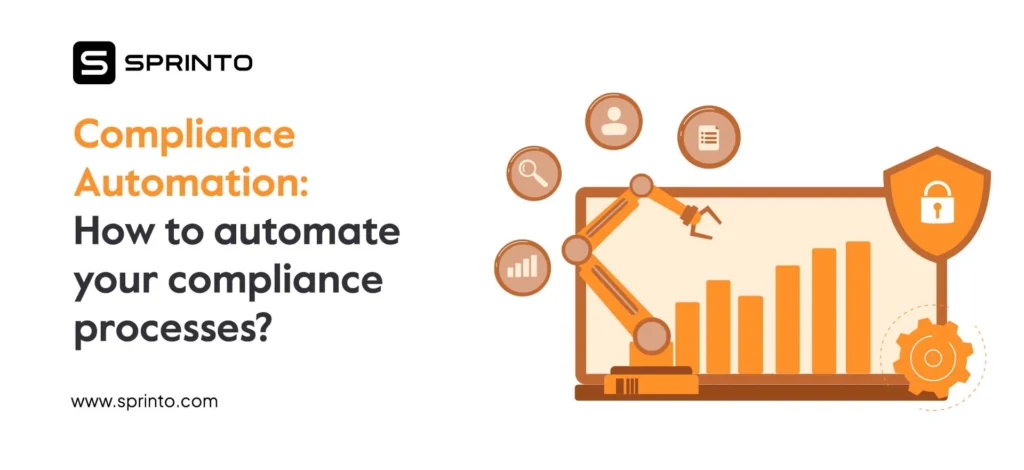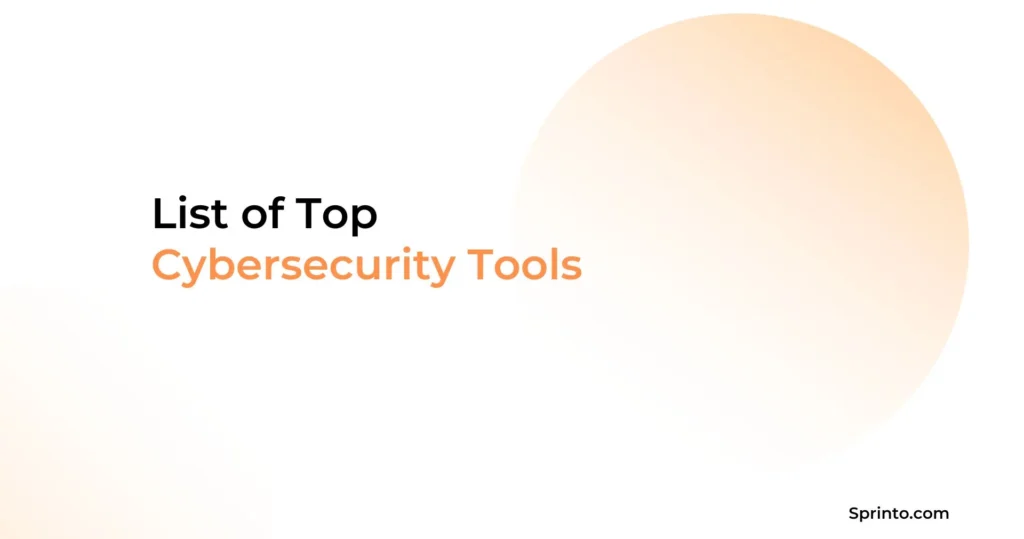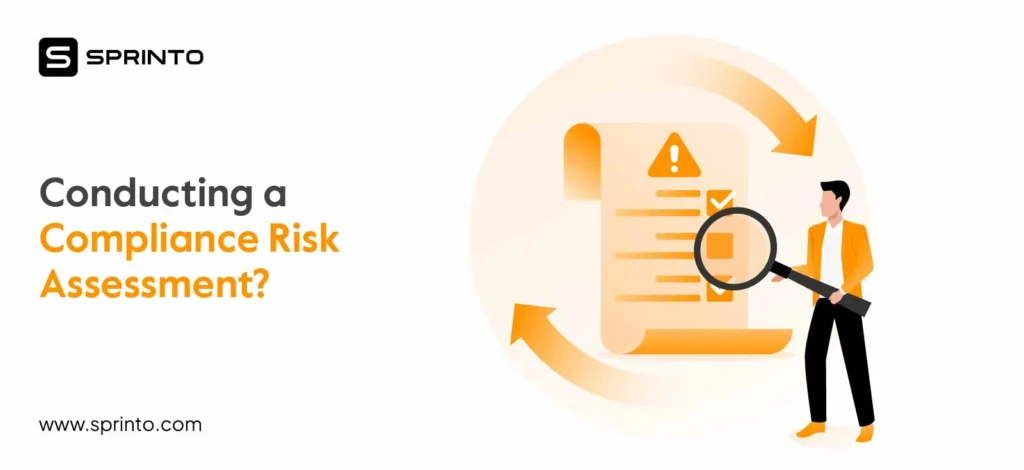If you lead security or compliance at a US mid-market company, time is the bottleneck. Screenshots pile up, owners change, and quarter-end becomes a scramble. Many teams blend spreadsheets with Jira, Confluence, Notion, or a few scripts, which works until audits, renewals, and enterprise questionnaires scale up and handoffs multiply. The result is context switching, stalled reviews, and no single source of truth across people, processes, and GRC tools.
A cloud-based GRC platform (governance, risk, and compliance platform) connects to identity, cloud, ticketing, HR, and code systems, runs scheduled control tests, and stores evidence once for reuse across SOC 2 and ISO/IEC 27001:2022 (and other frameworks). Leaders get board-grade, week-to-week visibility, and programs move from point-in-time prep to predictable audits and renewals. In practice, that means fewer meetings, less rework, and faster security reviews so revenue does not wait on a screenshot chase.
When to switch: Reviews are slipping, evidence is scattered, and control ownership changes mid-cycle.
What improves: A single evidence repository, scheduled control tests, routed remediation tasks, and live reporting replace ad hoc requests.
Results to aim for: Manual evidence at or below 10% by Month 2, and executive preparation time reduced from days to hours.
What Is a GRC Platform?
A governance, risk, and compliance (GRC) platform centralizes policy, control, risk, and evidence work in one place. It maps policies to GRC controls, runs scheduled control tests, collects evidence from source systems, and turns that activity into audit-ready reports and executive dashboards. Mid-market teams use it to replace manual uploads and get a live view of control health.
Purpose: It streamlines audits with compliance automation, standardizes control testing, and gives executives a current, single source of truth.
Who uses it: CISOs, Compliance Managers, Risk Owners, IT and DevOps, and Internal Audit, plus external auditors and customers during reviews.
Why Enterprises Need a GRC Platform?
Enterprises adopt GRC platforms to keep up with changing rules, reduce duplicate work across frameworks, cut audit toil, and give leadership a live view of risk. The platform turns seasonal audit sprints into steady, scalable work for US mid-market teams.
1. Regulatory and buyer pressure
Mid-market SaaS selling in North America must meet SOC 2, ISO/IEC 27001:2022, PCI DSS compliance management, GDPR data protection compliance, and, sometimes, HIPAA Security Rule alignment. A platform helps you meet all of them without having to re-prove the same control five times.
2. Audit fatigue and context switching
Continuous tests and a shared evidence store replace screenshot sprints and after-hours “can you pull this log?” threads. That reduces audit fatigue and frees engineering capacity.
3. Risk visibility that executives can use
Dashboards tie risks to mapped controls and named owners so leaders see movement by week, not quarter. That closes risk visibility gaps and builds trust with finance and the board.
4. Scale without sprawl
A governance platform designed around standard controls and cross-mapping addresses multi-framework management challenges and supports growth into new regions or products.
“Earlier, we’d have to rely on multiple tools and spreadsheets to check if we could reuse controls and evidence across frameworks. With Sprinto, it’s seamless; you can see all the different audit frameworks and the percentage of completion within your controls environment, that does give you some intel on the next easiest thing to go after.” ~ David Mason, Director of Security at Anaconda.
Key Capabilities of a GRC Platform
Mid-market teams need four things from a GRC platform: transparent governance, live risk, repeatable compliance, and reporting that leaders can use. Together, they let companies map controls once, collect evidence from source systems, and show real control health for SOC 2, ISO/IEC 27001:2022, PCI DSS v4.0, HIPAA, and GDPR.
Here are the Four key capabilities of a GRC Platform:
1. Governance
The governance side of the platform holds your policy library and control register with version history, approvals, and acknowledgments. Each control has a named owner, a test method, and a cadence, which replaces hallway conversations with tracked work and audit-ready proof.
2. Risk management
Risks are linked to assets and mapped controls; scores update as tests pass or fail; exceptions carry a reason, approver, and expiry. A monthly variance snapshot shows what changed, why, and who is closing it.
Proof in practice: Prometeia connected risks, assets, and controls, automated monitoring of two production lines and corporate IT, and reduced the number of active monitored controls from 1,500 to ~130 using a standard controls approach.
3. Compliance
Controls map once to requirements across SOC 2, ISO/IEC 27001:2022, PCI DSS v4.0, GDPR, HIPAA Security Rule, and NIST CSF. One artifact, for example, a quarterly access review, can satisfy overlapping requirements across frameworks, reducing duplicate collection and speeding fieldwork.
Proof in practice: Nium automated evidence for ~97% of SOC 2 controls and finished evidence reviews “in under two meetings.”
4. Reporting
Role-based dashboards (control pass/fail, top risks vs appetite, open findings by owner, time-to-close), immutable audit logs (“who changed what, when”), and push-button exports for leaders, auditors, and customers.
Proof in practice: Bizongo quickly needed SOC 2 and ISO/IEC 27001, while quarterly posture updates still depended on manual pulls across systems. Sprinto helped them connect identity and cloud, enabled automated tests, and rolled out policy acknowledgments from HR. It allowed them to enter for both audits in 3 weeks.
Benefits of Implementing a GRC Platform
A well-run GRC platform unifies work, cuts low-value busywork, and gives leaders reliable, real-time answers. Here’s what that looks like day to day.
1. Unified compliance and risk processes
A single evidence store and standard controls remove duplicated work across SOC 2, ISO/IEC 27001:2022, PCI DSS v4.0, HIPAA Security Rule, GDPR, and NIST CSF.
2. Reduced manual effort and faster audits
Compliance automation pulls proof from the systems you already use and lets auditors self-serve, which keeps engineering focused on delivery.
3. Improved visibility into enterprise risks
Executives receive a one-page view with top risks against appetite, what moved, and who owns the fix rather than a stitched deck.
4. Scalable compliance for growing organizations
As the scope grows, you extend mappings rather than rebuild the program, which enables teams to run multiple audits in parallel.
5. Continuous monitoring for proactive governance
Daily checks surface drift when it happens rather than at quarter-end, which keeps reviews calm and repeatable.
GRC Platform Architecture (How It Works)
Most teams don’t care about the buzzwords. They care whether the software fixes the messy middle between systems, audits, and people. Here’s how a modern GRC platform actually works under the hood, and how each layer replaces the standard manual compliance processes in spreadsheet-driven programs.
1. Centralized data repository
- One evidence store links policies, controls, tests, and evidence to the related requests or findings and their owners, with timestamps and full lineage
- Versioned policies and mapped controls with owners and cadences to fix the lack of centralized compliance control
- Evidence is stored once and reused across SOC 2, ISO/IEC 27001:2022, PCI DSS v4.0, GDPR, and applicable HIPAA Security Rule safeguards, and it aligns to the NIST Cybersecurity Framework categories
- Typical KPIs to track: manual-evidence rate ≤10% by Month 2; evidence reuse >50% in Q1
2. Integrations with enterprise tools
- Native connectors to identity (Okta, Azure AD), cloud (AWS, Azure, GCP), ticketing (Jira, ServiceNow), HRIS, CI/CD, and chat
- Four evidence types ingested on a schedule: configuration snapshots, activity logs, approvals, and attestations
- Least-privilege service accounts, deduplication, and control tagging so proof stays current without screenshots
- PCI DSS compliance management: daily change/control feeds replace quarter-end scrambles; change tickets and cloud configs link straight to controls
3. Automated alerts and workflows
- Scheduler runs tests daily/weekly and opens routed tasks on drift (for example, a new privileged user added outside change control)
- Exceptions require a reason, approver, and expiry, and expiries trigger follow-ups, so nothing lingers
- Vendor due diligence renewals and policy campaigns run on a cadence to reduce manual compliance processes and audit fatigue
- Practical operating targets: Sample turnaround ≤5 business days; mitigation SLAs tied to risk appetite
4. Real-time analytics and dashboards
- Live dashboards show control pass/fail trends, top risks vs. appetite, open findings by owner, and time-to-close, helping close risk visibility gaps
- Immutable activity log answers “who changed what, when” for auditors and leaders
- Standardized exports: Board packs, auditor PBC workspaces, and customer-safe due diligence bundles built from the same data
Here’s a simple check that tells you the architecture is working. By the end of week one, you should:
- Export last quarter’s access review with names and dates
- See daily changes from Okta/AWS in one place
- Let auditors grab a PBC list without help
GRC Platform vs Traditional Compliance Tools
Modern platforms aren’t just newer UIs. They replace manual steps with scheduled tests, shared evidence, and live reporting. Since we’re comparing modern vs. traditional workflows, here’s a quick, practical side-by-side.
| Criteria | Old way (spreadsheets & email) | Modern GRC platform |
| Automation | People chase screenshots and check controls right before audits. | Software collects proof daily from AWS, Okta, and Jira and stores it once; reviewers self-serve. Aim for ≤10% manual uploads and ≤5-day sample turnaround. |
| Scalability | Each new standard adds trackers and rework. | Common controls reuse evidence across standards; new scopes add in 2–6 weeks. |
| Reporting | Hand-built decks go stale, and meetings multiply. | A live dashboard shows what is green or red and who owns the fix; exports take minutes, so executive prep drops from days to hours. |
| Framework coverage | The same artifact is re-collected and renamed per standard. | One artifact can satisfy SOC 2, ISO/IEC 27001:2022, PCI DSS v4.0, GDPR, and applicable HIPAA Security Rule safeguards; target more than 50% reuse in quarter one. |
Platforms cut re-collection, surface drift early, and keep reports current; spreadsheets and point tools multiply work as scope grows.
How To Choose The Right GRC Platform
Picking a GRC platform is a decision about time-to-value and repeatability, not just feature lists. Use the five checkpoints below to align the tool with your US mid-market program (SOC 2, ISO/IEC 27001:2022, PCI DSS v4.0, HIPAA, GDPR) and your team’s day-to-day work. In addition to the following, other key evaluation criteria for GRC platform comparisons include real-time monitoring, collaboration, and comprehensive risk management.
Here’s a 5-stage checklist to help you choose the right GRC platform:
1. Identify frameworks:
- Demo shows one control reused across ≥2 frameworks (for example, SOC 2 + ISO/IEC 27001:2022)
- SOC 2 PBC and ISO SoA export from the same evidence store
- Vendors can map to the NIST Cybersecurity Framework for executive reporting
2. Evaluate automation and integrations:
- Week-one connections to Okta/Azure AD, AWS/Azure/GCP, Jira/ServiceNow, HRIS.
- Scheduled tests collect config snapshots, activity logs, approvals, and attestations
- Manual-evidence rate ≤10% by Month 2, samples turned around in ≤5 business days
3. Assess scalability:
- Shared control library and entity scoping (BU/region/product)
- Parallel audits running from one evidence store; New framework in 2–6 weeks via mapping, not rebuild
4. Consider usability and support:
- Role-based dashboards for CISOs, control owners, and auditors; Slack/Jira nudges.
- 30-day enablement plan; auditor workspace to reduce meetings.
5. Review pricing and timelines:
- Line-itemed licenses + implementation + auditor access.
- Week-one milestones; Month-one outputs; outcome targets in contract notes.
Leading GRC Platforms in 2026
Use these brief GRC platform profiles to quickly orient. Each entry includes an explainer, top features, pricing signal, a G2 rating line, and who it fits.
1. Sprinto: Automation-first, cloud-based GRC platform for fast audit readiness
Sprinto is a cloud-based governance, risk, and compliance platform built for mid-market teams that want fast time-to-value. We emphasize continuous control monitoring, automated evidence, and pre-mapped controls across SOC 2, ISO/IEC 27001:2022, HIPAA, PCI DSS, and GDPR to cut manual compliance processes and audit fatigue.
Top features:
- Continuous monitoring with automated evidence collection across cloud stacks
- Pre-mapped, reusable controls across multiple frameworks (acts as a SOC 2 automation platform and ISO 27001 compliance software)
- Real-time dashboards for risk visibility and audit-ready reporting
- Built-in policy management, vendor risk workflows, and alerts
Pricing: Quote-based
G2 rating: 4.8/5 (1,455 reviews)
Best for: SMBs and mid-market companies needing a cloud-native, automation-first platform and faster multi-framework audits
2. ServiceNow Integrated Risk Management
ServiceNow IRM is an enterprise GRC platform that centralizes risk, controls, and audit workflows on the Now Platform. It is suitable for organizations that have already standardized on ServiceNow and want to connect GRC with ITSM and SecOps.
Top features
- Centralized risk and compliance workspaces with automated assessments
- Policy lifecycle and control testing tied to service catalogs and assets
- Workflow routing, attestations, and issues/remediation tracking
Pricing: Quote-based
G2 rating: 4.4/5 (21 reviews)
Best for: Large enterprises with a ServiceNow footprint and complex, cross-department processes
3. MetricStream
MetricStream is an enterprise GRC platform that offers broad coverage across ERM, compliance, policy, and audit. It is known for its depth of configuration, which can benefit complex, highly regulated programs.
Top features:
- Broad module library across risk, compliance, audit, third-party, and regulatory change
- Flexible data model and workflows for complex org structures
- Reporting packs and dashboards for executive/board audiences
Pricing: Quote-based; typically multi-module deployments (longer implementations)
G2 rating: 3.9/5 (13 reviews)
Best for: Enterprises with complex, global governance needs and capacity for tailored configurations
4. LogicGate Risk Cloud
LogicGate Risk Cloud is a no-code GRC platform that emphasizes flexibility and fast iteration. It helps risk teams design workflows, connect data, and establish integrated risk management tools without heavy engineering support.
Top features:
- No-code workflow builder and library of solution packs
- Cross-workflow linking; FAIR/quantification options for risk analysis
- Vendor risk, issues, and audit workflows in one platform
Pricing: Quote-based with tiering by solutions/users
G2 rating: 4.6/5 (181 reviews)
Best for: Teams that value configurability and need to connect many bespoke risk/compliance processes
5. Diligent One Platform (formerly HighBond)
Diligent One is a governance platform that brings audit, risk, and compliance into a single view for executives and boards. It focuses on curated reporting and templates that standardize how results are delivered to leadership.
Top features:
- Audit, risk, and compliance modules with board-ready reporting
- Templates and dashboards for fast presentation to executives
- Centralized repository for policies, evidence, and findings
Pricing: Quote-based
G2 rating: 4.3/5 (≈145 reviews)
Best for: Enterprises prioritizing board reporting and integrated audit/risk workflows.
How Sprinto Functions as a Modern GRC Platform
Sprinto is a modern GRC solution that connects to the tools you already use, runs control tests on a schedule, and keeps one evidence store you can reuse across frameworks. Here’s how it works in practice, with the parts your team will feel daily.
1. Cloud-native and automation-first
- Connectors pull config snapshots, activity logs, approvals, and attestations from Okta/Azure AD, AWS/Azure/GCP, Jira/ServiceNow, HRIS, and CI/CD
- Control pages show owners, methods, last pass/fail, and next due date
- Drift alerts route to Slack/Jira with an assigned owner
2. Pre-mapped controls across multiple frameworks
- One artifact can satisfy many clauses across SOC 2, ISO/IEC 27001:2022, PCI DSS v4.0, GDPR, and HIPAA Security Rule
- SOC 2 PBC and ISO SoA export from the same evidence store
- Evidence reuse rate becomes a program KPI
3. Continuous compliance and real-time reporting
- Dashboards show pass/fail trends, top risks vs appetite, open findings, and time-to-close
- Board packs and auditor workspaces export in minutes, not days
4. Vendor risk and policy management modules
- Questionnaires (SIG Lite/CAIQ) reuse answers and link to current evidence; renewals trigger on schedule via third-party risk management tools
- Policy campaigns publish updates, collect acknowledgments, and keep dated trails
GRC software has become essential to manage governance, risk, and compliance at scale. The right system unifies controls and policies, automates evidence from your stack, and gives leaders a live view. This way audits confirm what the business runs daily.
Book a demo to see how Sprinto automates compliance and risk management across frameworks.
FAQs
1. How is a GRC platform different from SIEM or CSPM tools?
A SIEM analyzes security events and alerts. A CSPM checks cloud configurations for missteps. A GRC platform runs governance, risk, and compliance programs by mapping policies to controls, scheduling control tests, storing evidence, and producing auditor and board reports. Many teams connect SIEM and CSPM into the GRC platform to automate evidence and reporting.
2. What data does a GRC platform actually collect from our systems?
It typically reads configuration states, activity logs, approvals, and attestations. It does not need to copy production customer data to prove a control. Ask vendors to document each connector, the fields collected, retention windows, data residency options, and how evidence is hashed and time-stamped.
3. What should the first 30 days after purchase look like?
Expect baseline connectors to identity, cloud, ticketing, and HRIS, then a small control set mapped to one framework such as SOC 2 or ISO/IEC 27001:2022. You should see a first dashboard, a prepared-by-client export, and a short remediation list routed to named owners, with weekly progress reviews.
4. How do we measure success after go-live?
Track manual evidence rate, evidence reuse across frameworks, sample turnaround time, and time to close findings. Add program-level metrics such as time to audit-ready, number of controls monitored continuously, and how often executive decks are replaced by direct exports from the platform.
5. How does a GRC platform support third-party risk at scale?
Questionnaire automation, reusable answers, and control-linked evidence reduce rework. Renewals run on a schedule, and findings create vendor tasks with owners and due dates. This is where integrated risk management tools pay off.
Raynah
Raynah is a content strategist at Sprinto, where she crafts stories that simplify compliance for modern businesses. Over the past two years, she’s worked across formats and functions to make security and compliance feel a little less complicated and a little more business-aligned.
Explore more
research & insights curated to help you earn a seat at the table.



